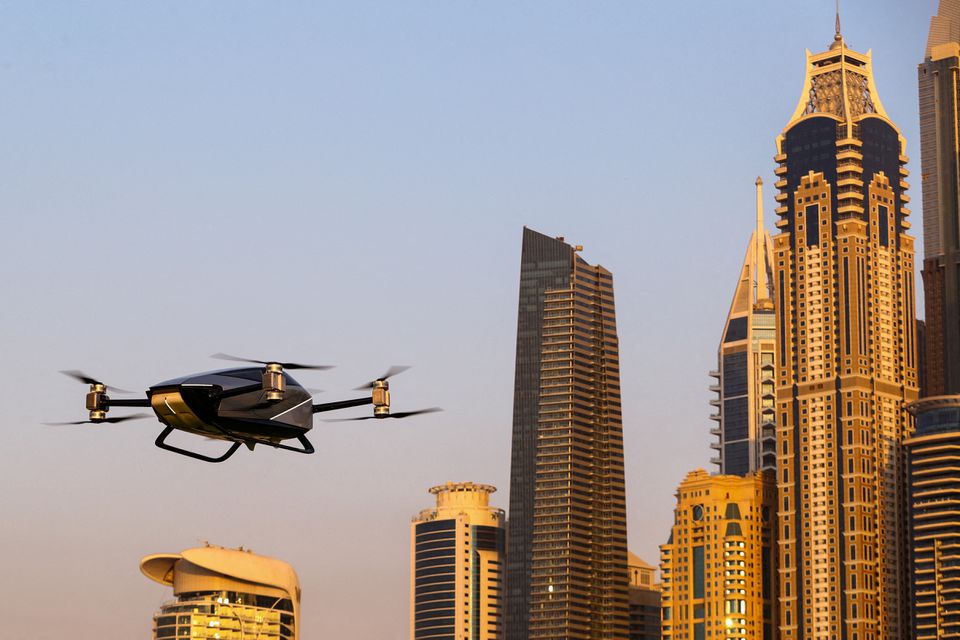The future of flying cars is no more a fantasy, the first flying car display was recently held in Dubai. A flying car built by Chinese electronic manufacturer Xpeeng Inc made its first public flight in the United Arab Emirates, as the company is working forward to launching the electric aircraft on international markets. “Will change the game of future mobility” said Xpeng Aeroht CEO Hassan Al Hashemi.

Towards the end of the 1985 sci-fi classic “Back to the Future,” the archetypal mad inventor Doc Brown announces “where we’re going, we don’t need roads” as the time-traveling DeLorean lifts into the air.
Join us on TELEGRAM for the Latest Aviation Updates fresh to your phone.
Whilst flying cars aren’t yet filling our skies, a number are in development. Last week the Chinese XPeng X2 completed the first public test flight of its two-seater flying car at the GITEX technology expo in Dubai — and it even shares the DeLorean’s famous gull-wing door design.
The XPeng X2 lifts vertically off the ground using eight propellers, without the need for a runway, and is, therefore, suitable for built-up urban areas. The vehicle, designed to carry two passengers, is fully electric and its makers say it can rise through the air at around two meters per second and reach speeds of up to 80 miles per hour.
Although the test flight lasted just 90 seconds, according to Liu, chief aviation specialist at XPeng Aeroht, the technology is close to being ready for public use, but regulations around flying cars are still some way off.

XPeng plans to work with governments to establish a physical regulatory infrastructure for flying cars in urban areas, and Liu believes that people will be able to use flying cars within limited regulated spaces in just five years. This lines up pretty well with ambitious plans from the Chinese government to launch flying taxis by 2025
If flying wasn’t futuristic enough, the XPeng X2 is equipped with AI automation — it can be driven manually or it can be set to self-drive. “It learns how to avoid traffic, avoid buildings and people,” says Liu.
The self-driving elements pose further difficulties with regulation, and also throw into question public acceptance. Many people are still concerned with safety issues around self-driving cars on the ground, let alone vehicles that are zooming around above their heads. However, XPeng says it’s safer for its flying car to be self-driving than to be driven by a human.
There are dozens of flying cars currently in development around the world, and many of them fly, like Canadian firm Opener’s “BlackFly,” SkyDrive Inc’s “SD-03” and Klein Vision’s prototype “AirCar” — which made a successful 35-minute test-flight between two cities in Slovakia last year.
CONCLUSION
Flying cars could revolutionize urban transport, making roads less busy and therefore safer for pedestrians and cyclists, and electric vehicles like the XPeng X2, also reducing carbon emissions.
.

Image source
reuters
yahoo.com
Youtube (South China Morning post )
You might also like:
- The Saturn V: A Rocket 15 Times Faster Than A Rifle Bullet
- American Airlines Boeing 737 Suffers Engine Flameout After Hitting Flock of Geese
- Have you ever heard of the Airbus A321LR?
- How Do Airports Safely Manage Parallel Runway Operations?
- Australia’s close call: Emirates flight 407
Discover more from Aviation for Aviators
Subscribe to get the latest posts sent to your email.

